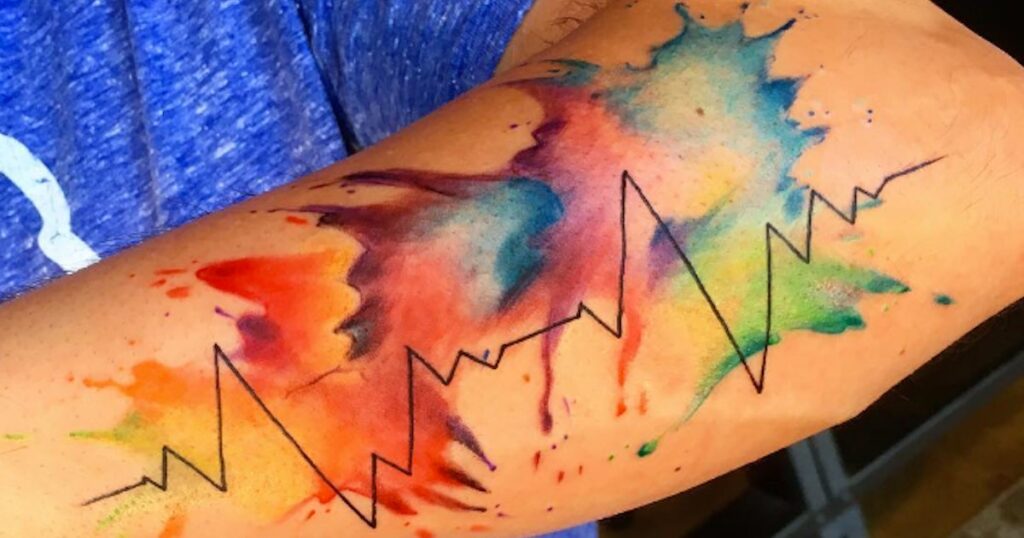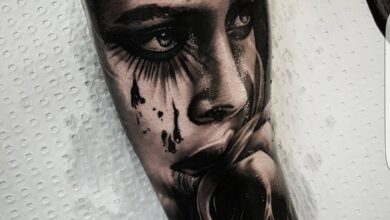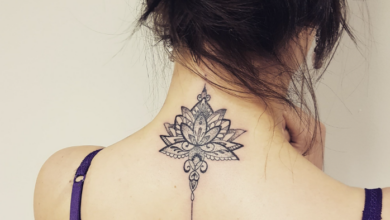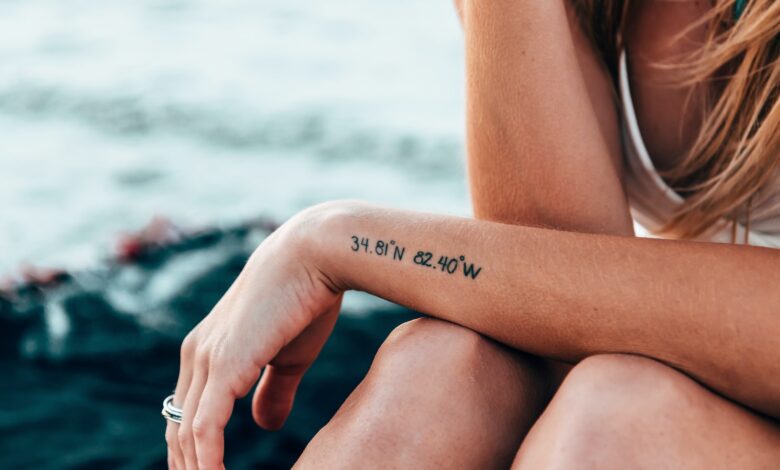
In the ever-changing world of tattoos, styles have come and gone, reflecting the artistry and individuality of those who choose to adorn their bodies with ink. The cycle of ink takes us on a captivating journey through the evolution of tattoo styles, from traditional designs rooted in ancient cultures to contemporary art forms that push the boundaries of imagination. Explore the rich history, cultural significance, and artistic techniques that have shaped the diverse world of tattooing, and discover how this timeless art form continues to evolve and captivate us with its infinite possibilities.
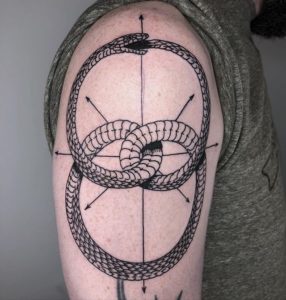
Traditional Tattoos
Origins and History
Traditional tattoos have a rich history that dates back centuries. These tattoos can be traced back to ancient civilizations like Egypt and Greece, where they were used for various purposes such as marking social status, warding off evil spirits, or serving as a rite of passage. In the Western world, traditional tattoos became popular in the late 18th century among sailors, who often got inked to commemorate their voyages or display their loyalty to a particular crew or ship. Over time, these tattoos evolved into a distinct style characterized by bold lines, solid colors, and iconic designs.
Characteristics and Techniques
Traditional tattoos are known for their bold and vibrant colors, often using primary shades like red, blue, green, and yellow. The designs typically feature thick, black outlines and minimal shading, creating a visually striking and easily recognizable look. The techniques used in traditional tattooing involve the use of a tattoo machine or hand-poking method. Artists meticulously outline the design first before filling it in with colors. This approach ensures that the tattoo will stand the test of time and maintain its distinctive appearance for years to come.
Popular Designs
Traditional tattoos encompass a wide range of designs that have stood the test of time. Popular motifs include anchors, roses, swallows, hearts, and nautical symbols like ships and compasses. These classic designs have a timeless appeal and continue to be sought after by individuals who appreciate the rich heritage and symbolism associated with traditional tattoos. Whether it’s a sailor commemorating their maritime adventures or someone seeking a connection to their roots, traditional tattoo designs have a universal appeal that transcends cultural boundaries.
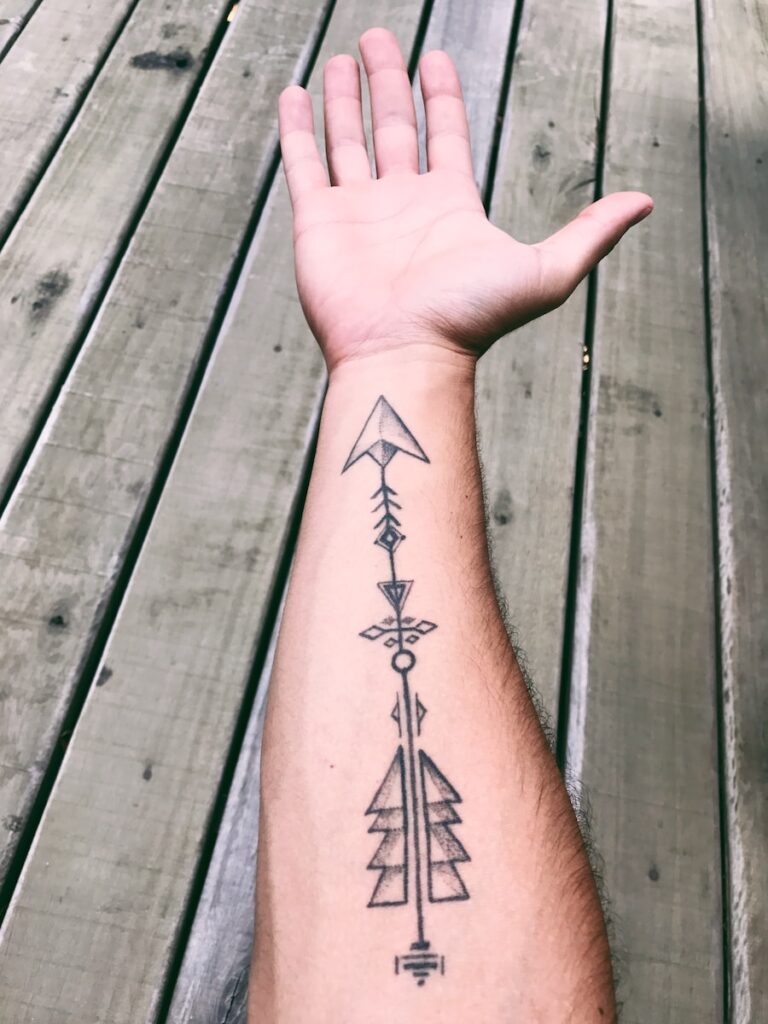
Neo-Traditional Tattoos
Emergence and Influences
Neo-traditional tattoos emerged as a response to the desire for a more contemporary take on traditional tattooing. This style gained prominence in the late 20th century and is heavily influenced by the traditional style, as well as other art forms like Art Nouveau, Art Deco, and comic book illustrations. Neo-traditional tattoos combine the boldness and recognizable imagery of traditional tattoos with more intricate details, vibrant colors, and a greater emphasis on shading and depth.
Distinctive Features
One of the distinctive features of neo-traditional tattoos is the use of a wider color palette, including softer hues and pastel tones. The designs often incorporate elements like flowers, animals, portraits, and mythological creatures, rendered in a more stylized and realistic manner. Neo-traditional tattoos also showcase more complex linework and shading techniques, giving them a three-dimensional and multidimensional appearance that adds depth and complexity to the overall design.
Popular Subjects
With its versatility and expanded range of artistic expression, neo-traditional tattoos lend themselves well to a variety of subjects. Popular themes include animal portraits, fantasy creatures like mermaids or dragons, floral arrangements, and intricate geometric patterns. This style provides tattoo artists and enthusiasts alike with the opportunity to create visually stunning and highly personalized designs that push the boundaries of traditional tattooing while honoring its roots.
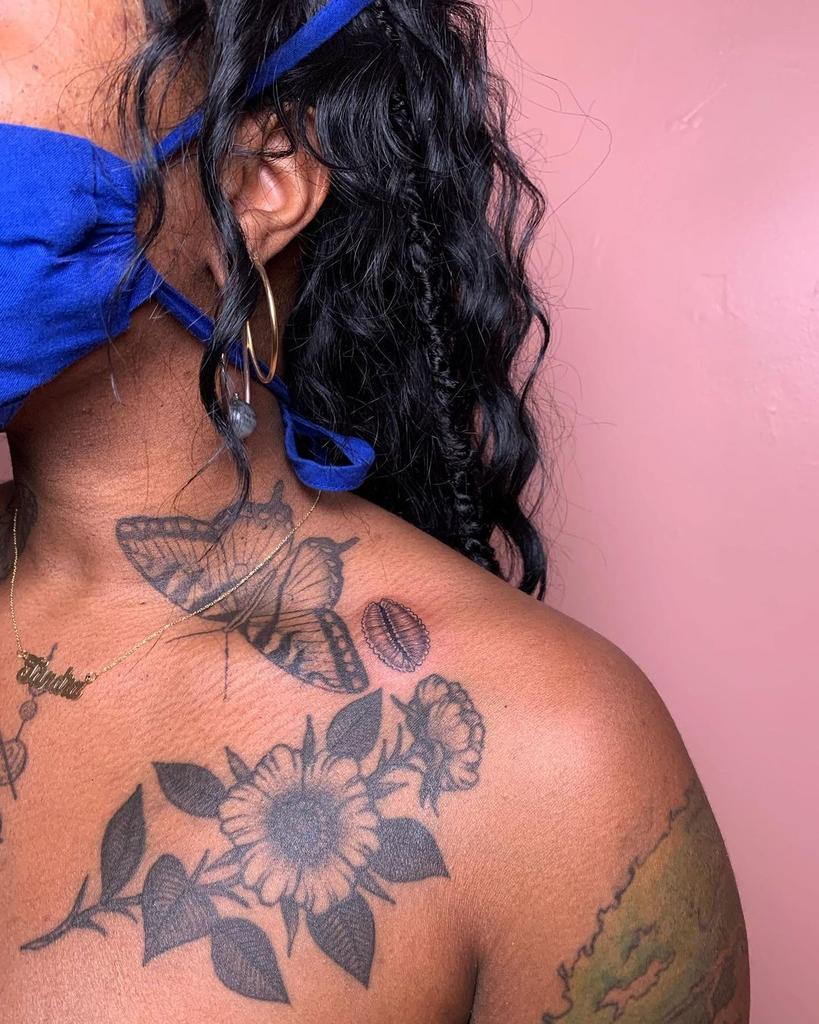
Realism Tattoos
Realism in Art
Realism tattoos strive to recreate photographic-like images on the skin, capturing every intricate detail and nuance of the subject matter. This style takes inspiration from realism in art, a movement that emerged in the mid-19th century and sought to depict subjects as they appeared in real life. Realism tattoos often feature portraits of loved ones, animals, nature scenes, or famous artworks, executed with meticulous precision and attention to detail.

Techniques and Challenges
Creating a realism tattoo requires exceptional skill and technical mastery. Tattoo artists must possess an intimate understanding of human anatomy, light and shadow, and color theory to accurately recreate the subject on the skin. They employ various shading techniques, such as stippling or blending, to achieve realistic textures and tonal gradients. One of the challenges faced is the need to ensure the longevity of the tattoo, as realistic details may fade or blur over time. Skilled realism tattoo artists strive to strike a balance between capturing lifelike details and creating a tattoo that will remain vibrant and recognizable for years to come.
Famous Realism Tattoo Artists
Several tattoo artists have made a name for themselves in the world of realism tattoos. Artists like Nikko Hurtado, known for his remarkable portraits and use of vibrant colors, and Robert Hernandez, whose dark and gothic realism designs push the boundaries of the art form, have gained international recognition. These artists have not only mastered the technical aspects of realism tattooing but have also developed their signature styles, which have become synonymous with the genre.
Portrait Tattoos
Rise in Popularity
Portrait tattoos have experienced a surge in popularity in recent years, as more and more individuals seek to honor and immortalize their loved ones through ink. These tattoos capture the likeness and expression of a person, effectively transforming their image onto the canvas of the skin. Portraits offer a deeply personal and meaningful way to pay tribute to someone dear, whether it’s a family member, friend, or even a beloved pet.
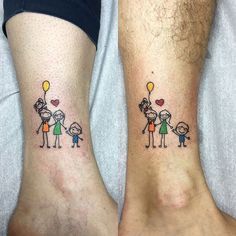
Capturing Likeness and Expression
Creating a portrait tattoo is a delicate and highly skilled process. Artists meticulously study reference photos provided by the client to accurately capture the subject’s likeness and unique features. They pay careful attention to details like facial structure, hair texture, and the play of light and shadow to ensure a faithful representation. The goal is not only to capture a person’s physical appearance but also to convey their personality and essence through the tattoo.
Examples from Different Artists
Tattoo artists specializing in portraits showcase their impressive skills through captivating and lifelike designs. Artists like Kat Von D, renowned for her ability to capture the intricate details of a person’s face, and David Cote, who excels in black and gray portrait tattoos, have gained recognition for their mastery of this challenging art form. These artists create emotive and striking portraits that serve as timeless reminders of the people who hold a special place in our hearts.
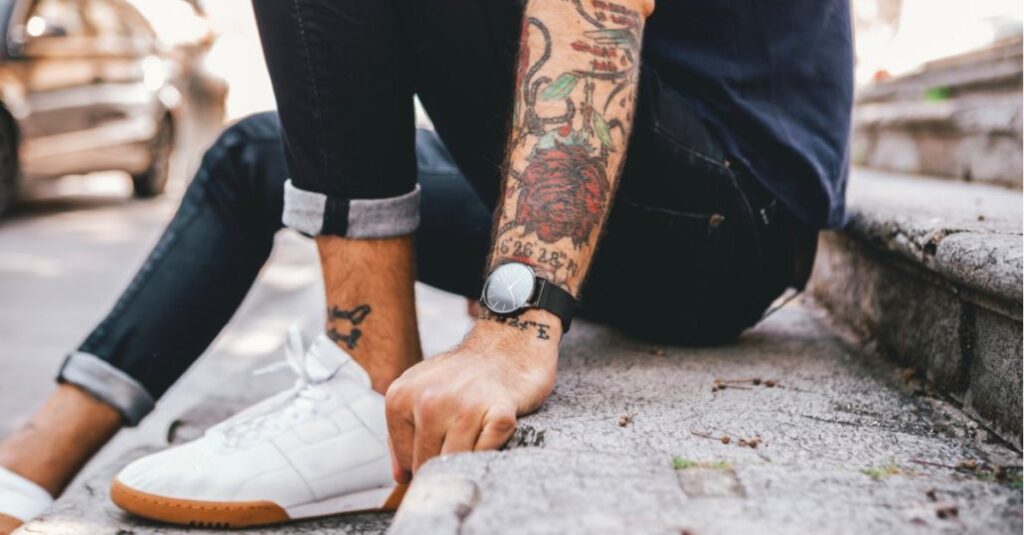
Watercolor Tattoos
Artistic Origins
Watercolor tattoos take inspiration from the spontaneity and vibrancy of watercolor paintings. This style originated from a desire to introduce more abstract and painterly elements into tattoo art. Like their painted counterparts, watercolor tattoos are characterized by fluid lines, soft gradients, and an ethereal quality that gives them a dreamy and artistic appearance.
Techniques and Application
Creating a watercolor tattoo requires a unique approach compared to other tattoo styles. Instead of relying heavily on bold outlines, these tattoos often employ less defined linework or even omit outlines altogether. Tattoo artists use a technique called “blending,” where colors subtly bleed and merge into one another, mimicking the way watercolors flow on paper. Due to the nature of the style, watercolor tattoos may require more frequent touch-ups to maintain their vibrant hues and delicate details.
Popular Watercolor Tattoo Designs
Watercolor tattoos offer endless creative possibilities. Popular designs include delicate floral arrangements, whimsical landscapes, abstract brushstroke patterns, and even animals rendered in vibrant, dreamlike hues. These designs often evoke emotions, convey a sense of freedom, or simply showcase the beauty of color and artistic expression. For those who resonate with the fluidity and unpredictability of watercolor paintings, these tattoos provide a unique means of self-expression on a permanent canvas.
Japanese Tattoos
Traditional Japanese Tattooing
The art of traditional Japanese tattooing, known as irezumi, has a history spanning thousands of years. Rooted in ancient Japanese culture, these tattoos were originally used as a form of punishment or to mark criminals. However, they eventually evolved into a highly respected and revered art form. Traditional Japanese tattoos often feature large-scale, intricate designs that cover extensive areas of the body, such as the back, chest, and sleeves.
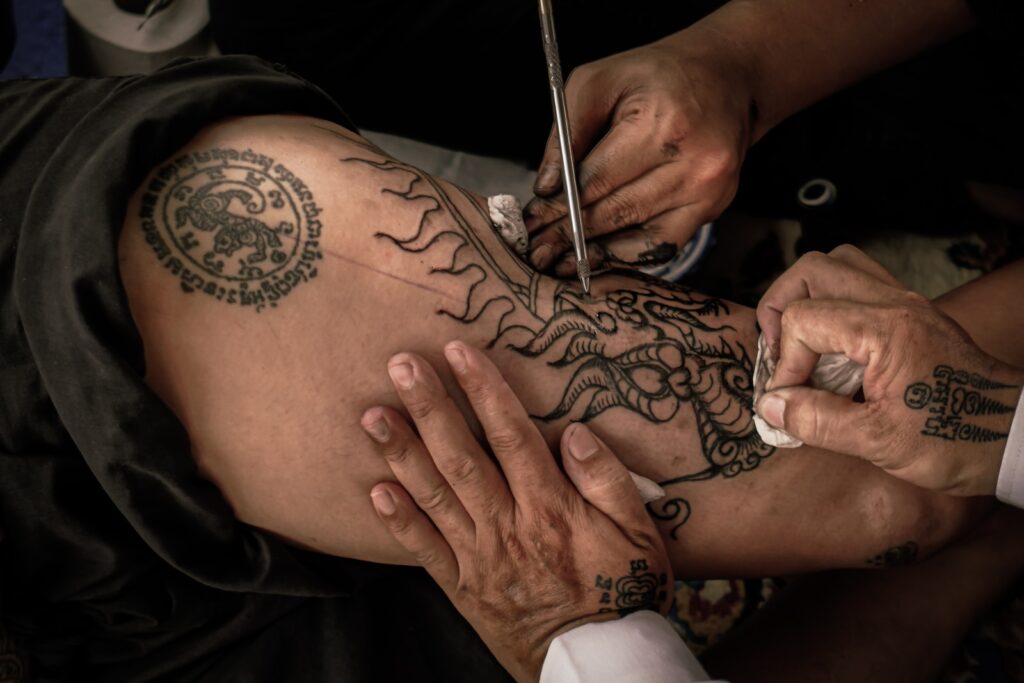
Symbolism and Meanings
Japanese tattoos are deeply symbolic and laden with meaning. Each element within a design carries its own significance and tells a story. Popular motifs include mythical creatures like dragons and phoenixes, beautiful geishas, majestic samurais, cherry blossoms, and koi fish. These symbols represent various virtues, like strength, protection, loyalty, and resilience. Japanese tattoo artists meticulously craft each design, ensuring that the symbolism and cultural significance are faithfully preserved.
Influence on Modern Tattoo Art
The influence of traditional Japanese tattooing can be seen in modern tattoo art worldwide. Elements like koi fish, cherry blossoms, and waves have become popular subjects that transcend cultural boundaries. The traditional Japanese style, with its intricate linework, vibrant colors, and distinctive symbolism, has found a place in the hearts of many tattoo enthusiasts who appreciate its beauty and connection to a rich cultural heritage. Tattoo artists often incorporate these traditional elements into contemporary designs, resulting in a fusion of ancient and modern aesthetics.
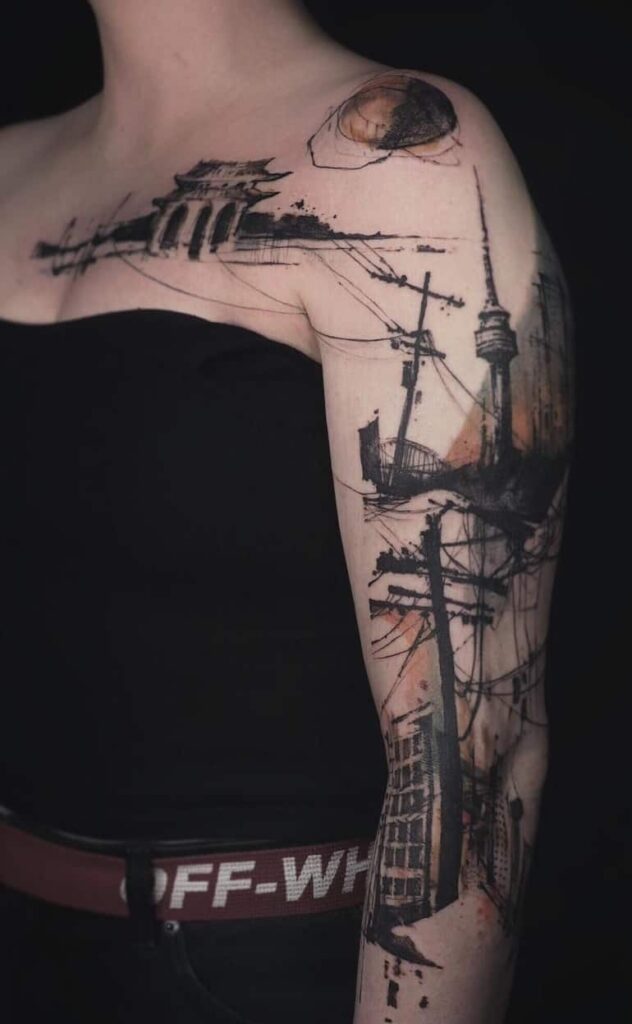
Blackwork Tattoos
Minimalism and Boldness
Blackwork tattoos are characterized by their bold, solid black ink designs. This style embraces minimalism, relying on the absence of color to create a striking contrast and emphasize the intricate patterns and shapes. Blackwork tattoos often feature geometric designs, mandalas, linework, and abstract motifs that showcase the power and beauty of simplicity.
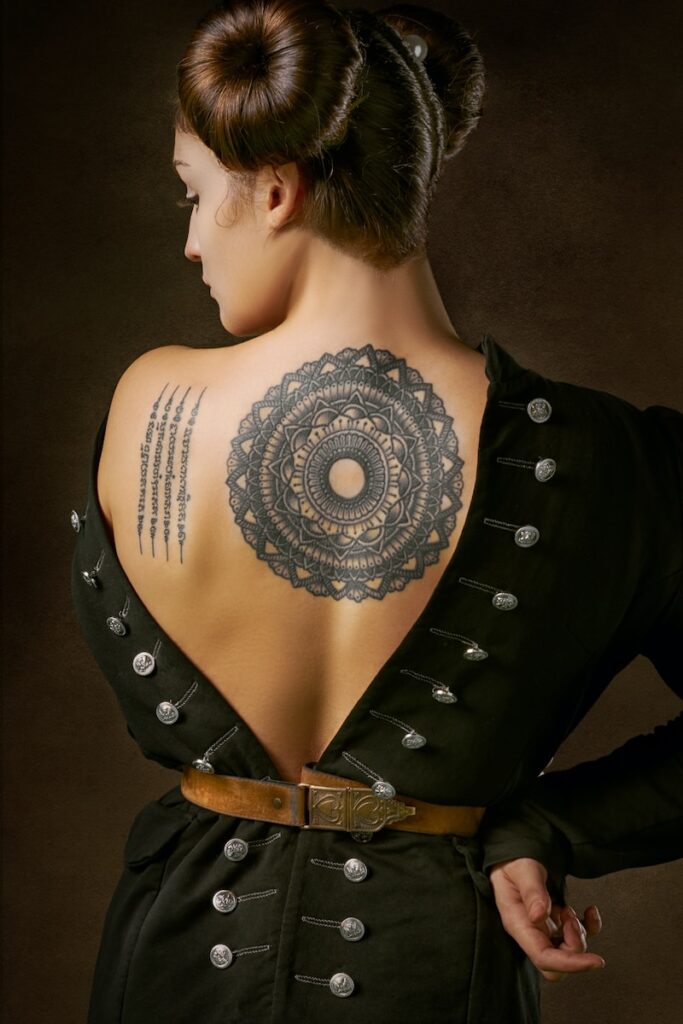
Styles and Execution
Blackwork tattoos encompass a range of styles, including dotwork, linework, and black and gray designs. Artists use various techniques, such as stippling, hatching, or solid black fill, to create depth and texture within the designs. These tattoos typically require multiple sessions to complete, as the process of densely filling large areas with black ink can be time-consuming. However, the end result is an aesthetically powerful and visually impactful tattoo that demands attention.
Popular Blackwork Tattoo Artists
The world of blackwork tattoos is home to many talented and renowned artists. Artists like Roxx, known for her intricate geometric designs and impeccable linework, and Nissaco, whose blackwork pieces often incorporate elements of traditional Japanese tattooing, have made a name for themselves in this style. These artists push the boundaries of black ink and create visually striking works of art that captivate the viewer with their simplicity and boldness.
Geometric Tattoos
Precision and Symmetry
Geometric tattoos are characterized by their precise lines, shapes, and symmetrical designs. These tattoos draw inspiration from sacred geometry, a belief system that posits that certain shapes and patterns have inherent spiritual or mathematical significance. Geometric tattoos often feature shapes like triangles, circles, squares, and hexagons arranged in intricate and symmetrical compositions.
![]()

Influence of Sacred Geometry
The influence of sacred geometry in geometric tattoos adds a deeper layer of meaning and purpose to the designs. Each shape carries its own symbolism, such as the triangle representing balance or the circle symbolizing wholeness and eternity. These tattoos serve as a visual representation of the interconnectedness of all things and can hold personal significance for the wearer. Additionally, the precision and symmetry of geometric tattoos create a visually pleasing aesthetic that appeals to those seeking order and harmony in their body art.
Creative Geometric Tattoo Designs
Geometric tattoos offer endless possibilities for creative expression. Artists often incorporate elements from nature, such as animals, flowers, or landscapes, into geometric patterns to add depth and complexity to the design. The combination of organic and geometric elements creates a visually striking contrast that captures the eye. Geometric tattoos also lend themselves well to larger scale pieces, like full sleeves or back tattoos, allowing artists to explore intricate patterns and create a cohesive and visually stunning composition.
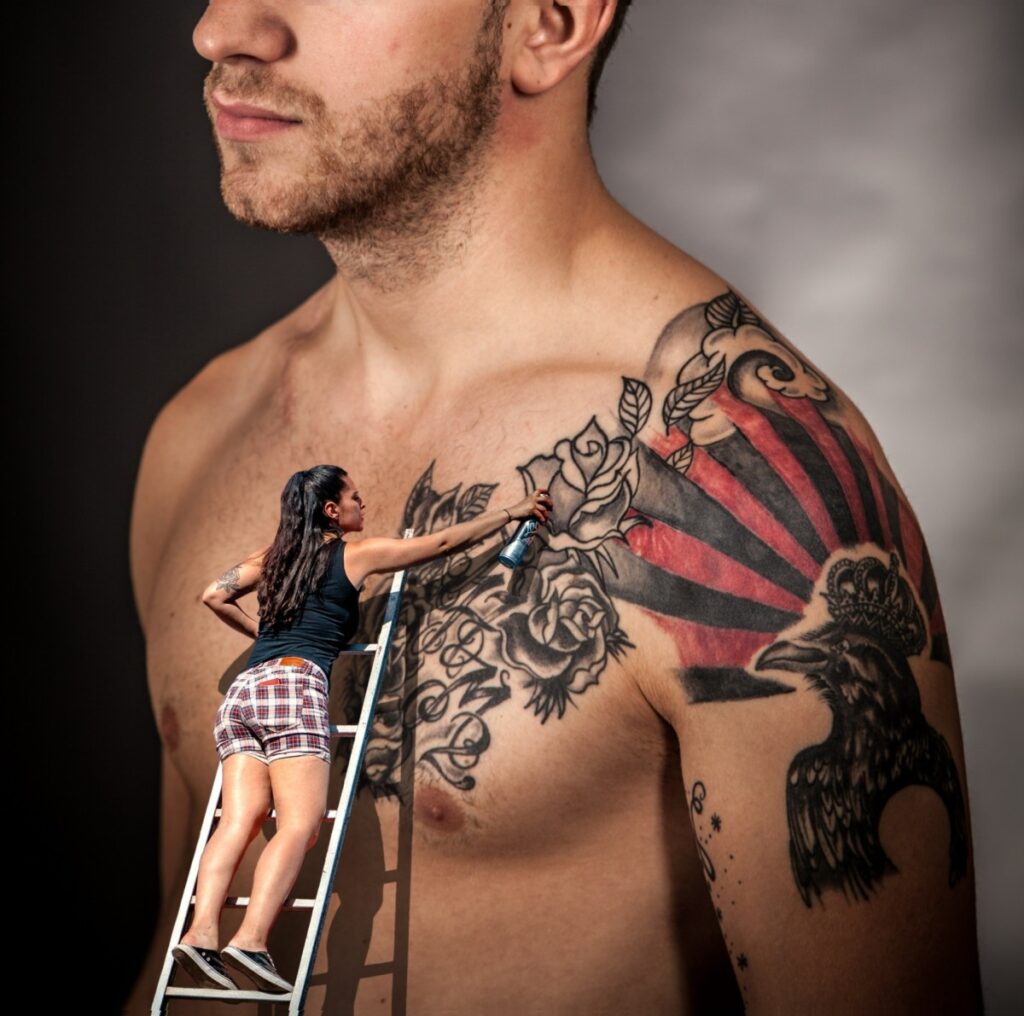
Dotwork Tattoos
Pointillism in Tattoos
Dotwork tattoos utilize the technique of pointillism, where intricate designs are created using a series of individual dots. This style draws inspiration from the art of pointillism, which emerged in the late 19th century and was popularized by artists like Georges Seurat and Paul Signac. Dotwork tattoos often feature highly detailed mandalas, spiritual symbols, or intricate patterns that are meticulously crafted and built up dot by dot.
Techniques and Endurance
Creating a dotwork tattoo requires immense patience and precision. Tattoo artists use fine needles to puncture the skin, carefully placing each dot to create the desired pattern or design. The density and size of the dots can vary, creating different levels of shading and texture. Due to the meticulous nature of this style, dotwork tattoos generally take longer to complete and may require multiple sessions. However, the end result is a visually captivating and unique tattoo that stands out for its intricate details and visual depth.
Renowned Dotwork Tattoo Artists
Dotwork tattooing has gained a dedicated following, with many talented artists specializing in this style. Artists like Chaim Machlev, known for his mesmerizing geometric dotwork designs and flawless execution, and Hanumantra Lamar, whose dotwork pieces often explore spiritual and mystical themes, have garnered international recognition. These artists have perfected the technique of dotwork tattooing, creating awe-inspiring art on the skin that captivates with its meticulous and intricate details.
Illustrative Tattoos
Artistic Expression on Skin
Illustrative tattoos are like small works of art etched onto the skin, blending elements of illustration, comics, and fine art. This style allows tattoo artists to showcase their creativity and storytelling abilities, creating visually engaging designs that evoke emotions and tell unique stories. Illustrative tattoos often depict characters, scenes, or concepts, bringing them to life through the medium of tattooing.
Influences from Illustration and Comics
Illustrative tattoos draw inspiration from the world of illustration and comics, capturing the essence of these mediums in a permanent form. Tattoo artists take inspiration from various art styles, such as comic book art, fantasy illustrations, or traditional paintings, to create their designs. The use of bold lines, vibrant colors, and dynamic compositions serves to create visually compelling tattoos that pay homage to the world of visual storytelling.
Notable Illustrative Tattoo Artists
The world of illustrative tattoos is home to a plethora of talented artists who continuously push the boundaries of this style. Artists like Sasha Unisex, known for her whimsical and vibrant animal portraits, and Mike Giant, whose intricate black and white illustrative designs are mesmerizing, have carved out a niche for themselves in this genre. These artists bring their unique vision and artistic sensibilities to tattooing, creating captivating and visually stunning designs that transcend the confines of traditional tattoo art.
In conclusion, the world of tattoo art is a vibrant and ever-evolving realm that encompasses a wide range of styles. From the bold and iconic traditional tattoos to the delicate and precise realism tattoos, each style offers a unique means of self-expression and storytelling. Whether one chooses to adorn their skin with a watercolor masterpiece or a geometric symphony, tattoo art continues to captivate and inspire both artists and enthusiasts alike. The cycle of ink continues to evolve, with new styles emerging and older ones adapting and influencing one another, creating an ever-expanding tapestry of diverse and captivating tattoo art.
Timeless Tattoos: Classic Designs That Never Go Out Of Style(Opens in a new browser tab)
Bold And Blackwork: A Stylish.ae Guide To Blackwork Tattoos(Opens in a new browser tab)

